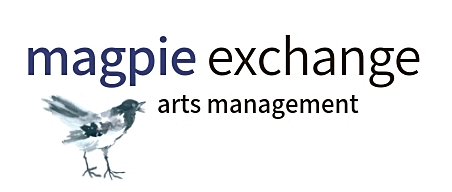After a summer of altering futures, social mobilization, and endless virtual town halls, our hearts and minds are full and exhausted in the arts sector. I am optimistic that as our society adjusts to significant change with COVID, we will also take leaps forward to address systemic racism and the climate crisis. It is heartening to work in a sector that despite being hit so hard by COVID, continues to self-examine and challenge itself to do better.
Recently, discussions on How to be Together offered by Zürcher Theater Spektakel and Tanz im August ended my summer with some other food for thought about arts participation and international connection during the age of COVID. Here are a few morsels…
Solidarity. This COVID moment is an opportunity for solidarity. Not only because “we are all in this together.” With the privileged free world at a standstill and everyone connecting virtually, the playing field for transnational exchange is somewhat leveled between artists living with and without freedom of movement. While freedom of speech and access to technology can still be a barrier, physical borders are closed whether you practice art in a democracy or dictatorship. Let us seize this moment, act in solidarity, and engage virtually with artistic counterparts in more restricted societies. If these artists are facing increased economic, health, or ecological challenges with the pandemic, ask what we can do to support their practice and help them hang on. Can we make this moment of universal lock-down a moment of universal solidarity?
Space. Conversations about an artist’s ability to define digital performance space point me back to a personal experience with space from November 2014. I attended a symposium in San Antonio on engaging the Latinx community in the arts. One night, we took small-group field trips - my group visited the Esperanza Peace & Justice Center (esperanzacenter.org) which is situated in a poor, inner-city area. We were driven in two hired SUVs – mine arrived first and we waited outside in the windy dark amid abandoned houses for the other SUV to arrive. I became cold and edgy. Change space: we entered intimate rooms packed with beautiful Día de Muertos family altars covered in photos, flowers, lit candles, offerings, and mementos. I found myself welcomed by a flood of photos of smiling faces, proud soldiers, and embracing families across generations. Volunteers awaited eager to share food and stories. Although culturally-unfamiliar, the space emanated warmth and love. I felt bonded to the Esperanza Center. The contrast between my feelings outside and inside could not have been greater.
When thinking of how audiences experience new space, I often refer to that night and the feelings emanated within the Esperanza space – warmth, pride of place, love, and generosity - and their impact on me. The space was new but the feelings were familiar and welcome. Can such feelings be captured and conveyed digitally? With digital presenting, we are examining how artists can create space and transcend the distance and disparate settings in which audiences are consuming art. One possibility may be to frame space through intangible feelings, including before and after shows.
Connection. How do artists create connection and energy with a physically absent audience? How do artists avoid fictionalizing them? This summer, I have loved the opportunity for audiences to chat online and post comments during shows. In this way, audiences have become more present during performances - at least to each other. This simultaneous interaction reminds me that in some African performance traditions – such as Ewe – the level of audience feedback vocalized during a performance is a measure of quality. I have pondered if the complacency of Eurocentric audiences detracts from their overall engagement and valuing of a performance. Now in the face of new delivery platforms being embraced across generations, is our collective audience behaviour unconsciously changing to be more engaged, as we strive to be connected in our isolation? Will our embrace of interaction during performances outlive the digital experience and help buoy live audiences towards more engaged practices?
